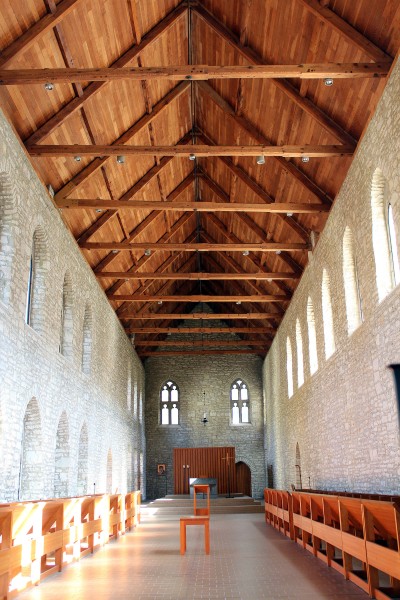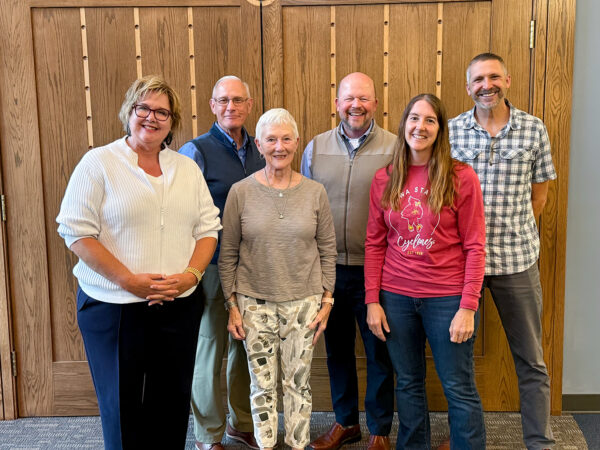Visiting New Melleray
Dressed in brown and white robes, the monks of New Melleray Abbey enter the chapel. Mid-day light pours through the arched windows of the expansive place, made of limestone and wood.
They do not speak to each other. Instead, they chant together.
Glory be to the Father and to the Son and to the Holy Spirit, as it was in the beginning, is now, and ever shall be, world without end. Amen.
In the back of the chapel, separated by a wrought-iron railing, are people from St. Paul. The Prime Time group, for those in their 60s/70s or thereabouts, recently traveled to the abbey near Dubuque to learn about the monks and their way of life.
They are Trappists — also known as Trappistines — members of the Order of Cistercians of the Strict Observance, tracing their roots back 900 years to France. They follow the ancient monastic
Rule of St. Benedict and lead a sequestered life of silent prayer, community liturgy, and manual labor.
The monks number just more than 30. They are old, middle-aged, and young, with different backgrounds, cultures, and tasks assigned within the community. The longest-tenured monk entered the community in 1946. The most recent novices entered in 2013.
They rise each day at 3:15 a.m. to start a schedule of prayer and work. Seven times a day they gather in the chapel to pray, the first for vigils at 3:30 a.m., the last for compline at 7:30 p.m.
Breakfast is at 4:10 a.m., dinner at noon, and supper at 6 p.m. They end their day at 8 p.m.
Six days a week, work is in two blocks, the first beginning at 9:30 a.m., the second at 2 p.m. Sundays are a day of rest from work.
Farming, a retreat house, and casket making sustain them.
The monks, who came from Ireland in the 1850s during that country’s potato famine, live on hundreds of rolling acres in Dubuque County. Farmland occupies some of the land, a 1,200-acre forest is rooted here, too.
It is those trees that provide the wood for the casket-and urn-making business. Monks and lay people work side-by-side in a well-lit shop across the road from the monastery.
The wooden caskets and urns are shipped across the country, an average of 28 caskets and 15 urns a week. Each is blessed by a monk. Trappist urns are used for those buried in the St. Paul Memorial Garden. Printed on the wall of the workshop are words from The Rule of St. Benedict: Let nothing be preferred to the work of God.




